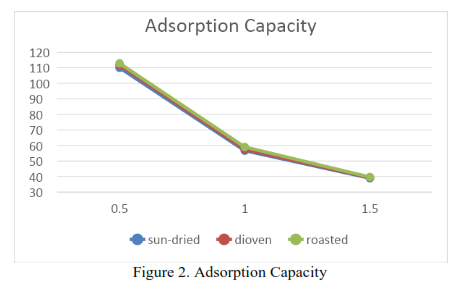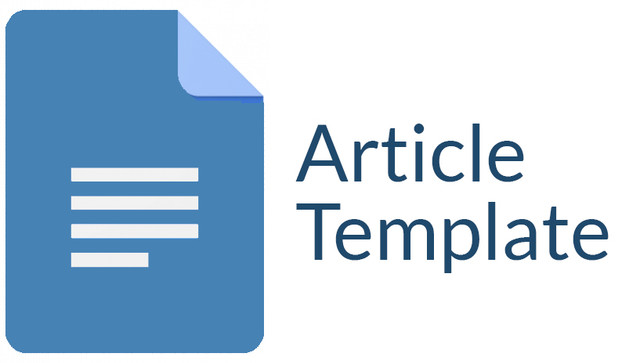Making Activator Materials Active Carbon From Wedi Skin Salak (Salacca edulis Reinw) With ZnCl2 Activator as Adsorbent to Reduce Fenol Content
DOI:
https://doi.org/10.30736/seaj.v6i2.1102Keywords:
Activated carbon, Salak skin, Phenol adsorption, ZnCl2 activator, Adsorbent materialAbstract
Making Activator Materials Active Carbon From Wedi Skin Salak (Salacca edulis Reinw) With ZnCl2 Activator as Adsorbent to Reduce Fenol Content. Wedi salak skin in Bojonegoro as an activated carbon material can provide an alternative for activated carbon manufacturing materials by utilizing environmentally friendly natural materials. The wedi salak skin is modified by treatment in the sun, in the roast, and in the oven in the manufacture of activated carbon which is then activated with ZnCl2 and then tested the adsorbs power of this salak skin activated carbon against phenol reduction. The adsorbent material that reduces the concentration of phenol the most is the roasted adsorbent material with a final phenol concentration of 2.15 mg/L so that the concentration of phenol absorbed is 297.85 mg/L at a mass of 1.5 g. The results of the analysis show that each variation of the activated carbon variation can reduce the concentration of phenol. The results obtained from this study are the type of activated carbon material whose highest absorption efficiency is the type of activated carbon material roasted at 99.28% with a mass of activated carbon of 1.5 g. Based on the results of the analysis, it can be seen that each variation of the type of activated carbon material will experience a decrease in concentration as the mass of the adsorbent increases. The greater the mass of the adsorbent, the adsorption ability will also increase. Each type of activated carbon material also experienced an increase in percent removal along with an increase in adsorbent mass. The results of research on the effect of activated carbon mass, also show that the adsorption capacity value decreases with increasing adsorbent mass. In this research data, the largest capacitance value was 112.87 mg/g at the smallest mass of 0.5g. The decrease in adsorption capacity is caused by the active side of the adsorbent that has not all bonded with the adsorbate.
Downloads
References
Taryana, M., & Sarma, T. (2002). Arang Aktif (Pengenalan dan Proses Pembuatannya). Skripsi JurusanTeknik Industri, FT-USU.
Hartanto, S., & Ratnawati, R. (2010). Pembuatan karbon aktif dari tempurung kelapa sawit dengan metode aktivasi kimia. Jurnal Sains Materi Indonesia, 12(1), 12-16.
Sirilamduan, C., Umpuch, C., & Kaewsarn, P. (2011). Removal of copper from aqueous solutions by adsorption using modified Zalacca edulis peel. Songklanakarin Journal of Science & Technology, 33(6).
Pradhan, S. (2011). Production and characterization of activated carbon produced from a suitable industrial sludge (Doctoral dissertation).
C. Namasivayam, D. Sangeetha, Indian Journal of Chemical Technology. 12, 2005.
Sodeinde, O. A. (2012). Preparation of a locally produced activated carbon from coconut shells and its use in reducing hexamine cobalt (III). International Journal of Chemical Engineering and Applications, 3(1), 67.
Nugroho, A. D. (2014). Studi Potensi Biji Salak (Salacca edulis Reinw) Sebagai Sumber Alternatif Monosakarida Dengan Cara Hidrolisis Menggunakan Asam Sulfat (Doctoral dissertation, Universitas Gadjah Mada).
Wu, J. J., Wu, C. C., Ma, H. W., & Chang, C. C. (2004). Treatment of landfill leachate by ozone-based advanced oxidation processes. Chemosphere, 54(7), 997-1003.
Pambayun, Gilar. S, dkk. “Pembuatan Karbon Aktif dari Arang Tempurung Kelapaa dengan Aktivator ZnCl2dan Na2CO3 sebagai Adsorben untuk mengurangi Kadar Fenol dalam Air Limbah”. Jurnal Teknik Pomits, vol. 2, no. 1 (2013): h. 116-120
Dwi Putranto, Ari dan M. Razif. “Pengaruh Aktivasi Arang Tempurung Kelapa dengan Asam Sulfat dan Asam Fosfat untuk Adsorpsi Fenol”. Jurnal Purifikasi, vol. 6. No. 1 (2006): h. 37-42.
Nurhasni, dkk. “Penyerapan Ion Aluminium dan besi dalam Larutan Sodium Silikat Menggunakan Karbon Aktif”. Valensi, vol. 2, no. 4 (2012): p. 516-525.
Rohmah, A. N., Septaria, K., & Santoso, A. (2024). THE IMPACT OF PHET-ASSISTED EXPERIMENTAL LEARNING METHODS ON STUDENTS'SCIENCE PROCESS SKILLS IN SCIENCE TOPICS. EDUPROXIMA (JURNAL ILMIAH PENDIDIKAN IPA), 6(3), 913-921.
Azzahroh, S. N. F., Septaria, K., & Wulandari, S. A. (2024). Pengaruh Model Pembelajaran Inkuiri Bermuatan Nature Of Science (NOS) Terhadap Argumentasi Ilmiah Pada Topik Zat Aditif. Jurnal Penelitian Sains dan Pendidikan (JPSP), 4(1), 13-21.
Septaria, K., & Rismayanti, R. (2022). The effect of scientific approach on Junior High school students’ Scientific Creativity and Cognitive Learning Outcomes. Jurnal Penelitian dan Pengkajian Ilmu Pendidikan: e-Saintika, 6(3), 173-189.
Septaria, K. (2022). Kemampuan Bertanya Versus Hasil Belajar Kognitif Mahasiswa: Analisis Korelasi Kemampuan Bertanya Pada Level Mahasiswa IPA. EDUPROXIMA (Jurnal Ilmiah Pendidikan IPA) Universitas Bhinneka PGRI Tulung Agung, 4(2), 60-71.
Septaria, K., & Fatharani, A. (2022). Manga versus webtoon: Alternative science learning module based on Dr Stone. Jurnal Inovasi Pendidikan IPA, 8(1), 11-22.
Septaria, K., & Dewanti, B. A. (2022). Analisis kepuasan mahasiswa Pendidikan IPA menggunakan learning management system Brightspace pada matakuliah Mitigasi Bencana. JIPVA (Jurnal Pendidikan IPA Veteran), 6(1), 19-33.
Budiono, Ari dkk. “Pengaruh Aktivasi Arang Tempurung Kelapa dengan Asam Sulfat dan Asam Fosfat untuk Adsorpsi Fenol”, (2008): h. 1-12.
Farhana Binti Mohamed Wazir, Skripsi, Faculty of Applied Science Universiti Teknologi Mara, Mara, 2012.
Sodeinde O. A, International Journal of Chemical Engineering and Applications. 3, 2012.
Asbahani. “Pemanfaatan Limbah Ampas Tebu sebagai Karbon Aktif untuk Menurunkan Kadar Besi pada Air Sumur”. Jurnal Teknik Sipil Untan, vol. 13, no. 1 (2013): h. 105-114

Downloads
Published
How to Cite
Issue
Section
License
Copyright (c) 2024 Aprillia Dwi Ardianti, Mohammad Anshori

This work is licensed under a Creative Commons Attribution-ShareAlike 4.0 International License.
Authors who publish with this journal agree to the following terms:
- Authors retain copyright and grant the journal right of first publication with the work simultaneously licensed under a Creative Commons Attribution-ShareAlike 4.0 International License that allows others to share the work with an acknowledgment of the work's authorship and initial publication in this journal.
- Authors are able to enter into separate, additional contractual arrangements for the non-exclusive distribution of the journal's published version of the work (e.g., post it to an institutional repository or publish it in a book), with an acknowledgment of its initial publication in this journal.
- Authors are permitted and encouraged to post their work online (e.g., in institutional repositories or on their website) prior to and during the submission process, as it can lead to productive exchanges, as well as earlier and greater citation of published work (See The Effect of Open Access).

This work is licensed under a Creative Commons Attribution-ShareAlike 4.0 International License.









